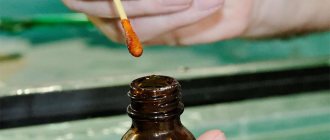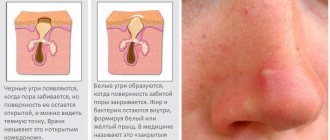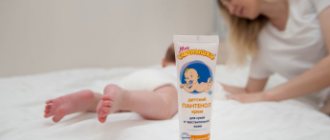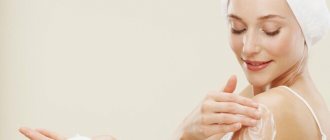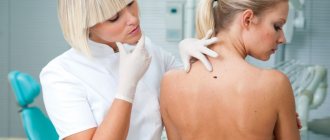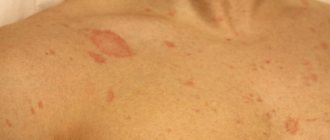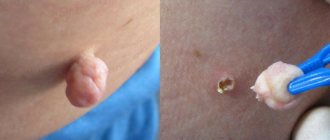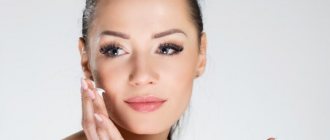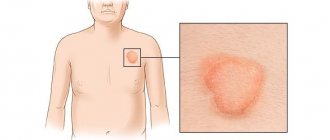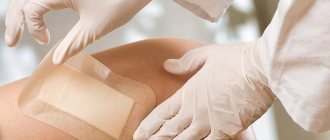To confirm or refute the presence of skin diseases in a patient, dermatologists conduct an iodine test for pityriasis versicolor or pityriasis versicolor. Pityriasis peeling under the influence of the drug manifests itself within a few minutes. You can conduct an iodine test yourself at home. This will require water, cotton wool, iodine and patience.
The essence of the procedure
The bacteria that cause lichen are always present on everyone's skin. But they are activated and manifest only when a malfunction occurs in the human body. Pityriasis versicolor can be recognized by spots that are usually red, less often pink or dark brown. At the beginning of the disease, the spots look like an allergic reaction. To determine what kind of rash it is, you can do an iodine test.
In medical language, the iodine test is called the Balser test. The essence of the method is that the affected area of the skin is lubricated with an iodine solution and wait to see how it manifests itself. If the reaction is positive, the areas of the skin where the fungus is supposedly located will turn a darker color than areas of healthy skin, and the peeling will become much more noticeable. An iodine test allows you to determine lichen, because the epidermis affected by the fungus becomes looser and, as a result, absorbs more of the drug.
Who is it prescribed to?
Due to the absence of a pronounced negative effect on the patient’s body of the drugs used to perform the Balzer test, this procedure can be prescribed to almost any person in order to diagnose the current condition. Even increased sensitivity of the skin, pregnancy, lactation and childhood are not considered grounds for refusing to undergo it.
Children and adolescents are most often exposed to the fungus that provokes the development of pityriasis versicolor. Manifestations of this skin lesion can be detected when visiting hot southern countries, where the microflora is most favorable for the development of fungus. And in all cases, diagnosing the condition using the Balzer test should be considered the safest and easiest to implement method of detecting and diagnosing the disease.
How to properly test with iodine for lichen?
When performing a test with iodine, it is necessary to apply a small amount of the drug to the skin, since a large amount can cause a burn to the loosened epidermis. For an accurate diagnosis, the patient needs to prepare the body - wash the area of skin on which the test will be performed with iodine and dry it thoroughly. Droplets of water can ruin the test. This is followed by:
- apply iodine to the intended affected area;
- wait until the drug is absorbed;
- study the result.
Not all types of lichen can be determined using an iodine test.
Potential areas for lichen are the back, stomach, shoulders, between the thighs or under the breasts. If the spread of the fungus begins in places that are difficult to reach when conducting an iodine test, the patient will need outside help. It happens that small spots of fungus merge into one large plaque, which can cover a fairly large area of the body. In such a situation, in order not to coat the patient with iodine, you can make several smears on the supposedly diseased epidermis and the same number on a healthy, but different part of the body, for example, on the arm and back or leg.
When conducting such a test at home, you should remember that the iodine test for lichen is not an accurate marker in making a diagnosis, but only one of the methods that can indirectly confirm or refute it. The test is not able to identify such varieties of lichen as pink, tinea, ringworm or scaly. Doctors perform an iodine test in combination with other tests for this type of fungus.
results
Healthy skin lubricated with iodine should be shiny and golden in color. Sick - will be matte and dark brown. If the reaction to iodine is positive, the patient should start using not only antifungal drugs, but also begin to restore the immune system. Pityriasis versicolor is a disease that is difficult to cure, and with the slightest weakening of the immune system it can appear again.
Why do such an analysis?
People with reduced immunity levels, children and adolescents are most susceptible to the effects of the fungus that provokes the development of pityriasis versicolor. The frequency of this diagnostic procedure does not affect the state of health, therefore even frequent diagnosis will not have a negative impact on a person.
Performing the Balzer test is recommended in the presence of severe damage to the skin, in which areas of rough, severely flaky skin form on the skin. In this case, dry particles can have completely different configurations and merge into large spots, worsening the appearance of damaged skin.
Depriving forms
A person may experience the following types of lichen:
- Ringworm - the causative agent is Trichophyte fungi. Most often, children become infected with this disease after contact with a sick cat or dog.
- Pityriasis - the cause of the disease is yeast-like fungi.
- Shingles – the development of the disease is provoked by herpes.
- Pink - this form of lichen is allergic and not contagious. The reason for its development is not precisely known.
- Weeping.
- Scaly.
Depending on the type of lesion, symptoms may vary. This also affects the choice of treatment tactics.
Using a special lamp, a dermatologist will be able to assess the nature of the lesion. If necessary, scrapings of the skin will be taken.
Incorrect self-treatment can only worsen the problem.
Examples
An iodine test is a safe and quite informative analysis that can be carried out both in a clinic and at home, following safety rules.
The cost of this procedure in medical approval is low compared to other diagnostic procedures, ranging from 500 to 1000 rubles, depending on the clinic.
How to identify lichen at home?
To successfully treat a disease, you must first check its type. You can draw the right conclusions based on the symptoms, signs and locations of skin rashes:
- Pityriasis rosea often depends on the season. Women aged 20-40 years are at risk. The spots may appear on the back, chest, sides and abdomen. Skin folds may also itch. The formations reach 3 cm and look like light red spots with peeling.
- Ringworm occurs mainly in children as a result of contact with a sick animal. Pink plaques measure up to 4 cm. They grow on the shoulders, face, neck and head. In the latter case, hair falls out.
- Shingles in most cases affects older people who did not have chickenpox as children. The provoking factor is herpes. At the site of the lesion, blisters appear that itch and hurt. When they burst, the lesion becomes covered with a crust.
- Lichen versicolor is often diagnosed in young people. The spots appear on the neck, shoulders and back. The circular rashes on the skin may be brown, pink or yellow.
You can independently determine the presence of lichen at home using regular iodine. This product is used not only for the purpose of disinfecting wounds and abrasions. Dermatologists use it to detect certain skin diseases.
Causes
Pityriasis versicolor is caused by infection with the fungus Pityrosporum orbiculare. Even in a healthy person, it can normally be present in the stratum corneum of the epidermis and hair follicles. It is quite difficult to become infected from contact with a sick person. Most often, the activation of the fungus is caused by certain provoking factors. These include:
- Decreased immunity level.
- Development of seborrhea.
- Excessive sweating.
- Features of the chemical composition of sweat.
- Impaired exfoliation of the epidermis.
- Individual predisposition to the disease.
- Presence of diabetes mellitus.
- A person has tuberculosis.
- Changes in the body during puberty.
- Chronic pathologies in the gastrointestinal tract.
- Use of clothing made from synthetic fabrics.
What is the Balzer test?
This test is considered the most common. With the help of iodine, you can identify or clarify a skin problem. This diagnostic method is applicable to detect pityriasis versicolor.
The procedure is carried out taking into account the following algorithm:
- before using the substance, stains must be washed and dried well;
- the affected area is smeared with iodine and waited 5 minutes to evaluate the result.
If there is a fungal infection, the spot will turn dark brown, that is, it will be very different from the color of healthy skin.
Due to the simplicity of the diagnostic method, it can be performed on almost all patients.
There is an opinion that iodine can cure lichen. In fact, doctors do not support such a statement, since this substance is used only for diagnostic purposes. For effective treatment, you need to undergo additional diagnostics, including scraping the affected skin, culture of the fungus and examination under an ultraviolet lamp.
Decoding the results
The final diagnosis is made based on the results of the Balzer test: in the presence of heavily colored areas of the skin, when they are peeling, and there is a significant formation of dry particles on the skin, the diagnosis of pityriasis versicolor can be confirmed.
Also, to further confirm the diagnosis, it is recommended to scrape dry areas of skin and further examine them using special laboratory tests. A Wood's lamp can be used. An important point in making a diagnosis is the personal practical experience of a dermatologist who will decipher the result obtained.
Differential diagnosis
Only a doctor can make an accurate diagnosis, and he must examine the patient. If the need arises, he is prescribed tests.
In some cases, iodine will help determine the presence of lichen at home. When applied to the affected skin, you can notice rapid absorption of the solution in certain areas, and their color will be much brighter.
If you have been able to identify lichen in a person using iodine, then you should quickly consult a doctor to confirm the diagnosis and receive recommendations for the treatment of lichen.
Precautionary measures
It is strictly prohibited to treat some forms of lichen with iodine. It dries out the skin and irritates inflamed areas, which can lead to eczema.
In addition, you cannot use highly concentrated iodine; 5% is used for the test , otherwise you can cause a burn.
It is also necessary to use iodine very carefully when mucous membranes are close to each other - delicate mucous membranes are very susceptible to aggressive substances, and even 5% iodine can leave behind quite severe burns.
Can iodine be used for treatment?
Iodine is an antiseptic that is used for disinfection, so it is not advisable to use it as a separate remedy for the treatment of pathology. Iodine shows good results against lichen if you combine it with other remedies.
Let's pay attention to the most common methods of treatment using iodine:
- The affected area of skin should be washed with soap to soften the tissue and remove peeling. Next, you should cauterize the skin with iodine, applying a thin layer. This procedure must be carried out once every 5 days in a row.
- Iodine can be alternated with brilliant green, for example, one day - iodine, the second - brilliant green, and so on. You need to smear the spots for 10 days.
- Treatment using a 10% iodine solution and green soap will be effective. For 3-4 days, the skin is washed with green soap to remove the scales. When wounds appear, they are treated with iodine. After 5 days, the course can be repeated again.
- Ringworm can be cured using paper resin. To do this, you need to roll up the paper, put it in a narrow container and set it on fire. After burning the paper, you need to remove the ash and separate the yellow dust, which is the resin. The stain is first smeared with iodine, then sprinkled with resin on top.
It is not recommended to be nervous during treatment with iodine, since this factor reduces immunity, which in turn inhibits the result. You should also spend less time in the sun. You cannot wear someone else’s clothes or use someone else’s personal hygiene products. During treatment of the disease, it is necessary to frequently disinfect the wardrobe and change the bed.
In any case, you cannot carry out iodine therapy yourself, as there is a risk of aggravating the problem and getting burns as a result of improper use of iodine.
The causative agent of lichen is a viral or fungal infection. In addition to drug therapy, patients often resort to folk remedies. Can iodine be used for treatment?
For what skin reaction should cauterization with iodine be discontinued?
The drug must be applied to the affected areas of the body very carefully, otherwise it will lead to burns and an iodine allergic reaction.
Before starting treatment, you must make sure that there is no individual intolerance.
- Apply a small amount of the drug to the skin of the wrist and monitor the reaction.
- If after several hours there is no rash, redness, itching or other unpleasant symptoms, then iodine can be used as part of complex therapy.
Do not apply the product to areas of the body with open wounds or injuries. The recommended frequency of use for adult patients is no more than 4 times a day, for children – no more than 2 times.
How long can iodine be used?
- The course of treatment is quite long - from 2 to 4 weeks (depending on the form).
- It is advisable to carry out treatment in the initial stages of the disease in parallel with the use of antifungal agents (ointments, tablets).
- If there is no improvement within 48-72 hours, then iodine is discontinued and another remedy is selected.
During the first 3 days of treatment for deprivation, doctors recommend avoiding water procedures. If after lubrication the skin becomes very tight, you need to treat it with boiled water. During therapy, it is imperative to limit possible contacts with family members (many forms of lichen are contagious), and to use only personal hygiene items and cutlery.
When treating ringworm, courses of skin treatment with iodine are allowed. For the first 3 days, the solution is applied to the affected areas, then take a break and after 5 days, repeat the procedure if necessary. If a strong burning sensation occurs, it is recommended to mark the drug.
Ringworm is a type of skin disease caused by a fungal or bacterial infection. Not all types of pathology are allowed to use iodine solution. In the case of pityriasis rosea, the drug only aggravates the condition (eczema forms on the skin). Ringworm and multi-colored can be treated with iodine in combination with antifungal drugs. It is important to observe the frequency of procedures, since exceeding the dose leads to an excess of iodine in the body and disruption of the thyroid gland. Before starting to use the drug, you should definitely consult your doctor.
Contraindications
Since the Balzer test is absolutely harmless to health and has no negative consequences for the skin, it can be prescribed to anyone who may experience this type of lichen. There are no restrictions on the use of this diagnostic method for pregnant women, nursing mothers, or children (even in early childhood).
Some complications and a number of negative manifestations may occur in the presence of hypersensitivity to iodine, but this type of allergy is not common.
